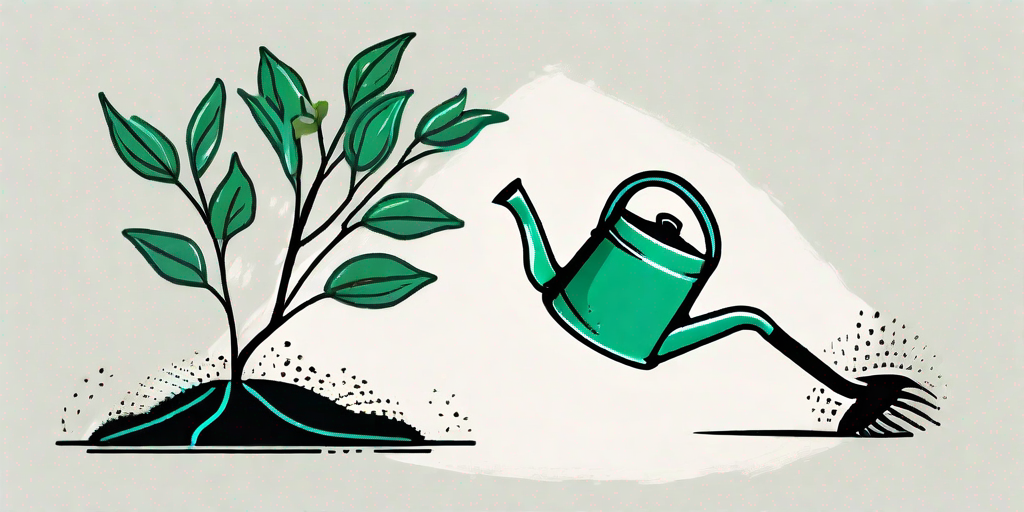
Welcome to the wonderful world of holly trees! These evergreen beauties are a staple in many landscapes, especially during the festive season. But what happens when your holly tree outgrows its current location, or you move to a new home and want to bring your beloved tree with you? Fear not, for we have the answers. This guide will take you through the process of transplanting holly trees, from understanding the roots to basking in the riches of a successfully transplanted tree.
The Holly Tree: A Brief Introduction
Before we dive into the nitty-gritty of transplantation, let's take a moment to appreciate the holly tree. Known scientifically as Ilex, holly trees are a diverse group with over 400 species. They range from small shrubs to large trees and are known for their glossy green leaves and bright red berries. But enough about that, let's get to the fun part: moving them around!
Transplanting a holly tree is not a task for the faint-hearted. It requires patience, a bit of muscle, and a good sense of humor. But with our guide, you'll be moving trees like a pro in no time.
Understanding the Roots
Before you start digging, it's important to understand what's happening beneath the surface. Holly trees have a fibrous root system, which means they have a lot of small roots rather than a few large ones. This makes them relatively easy to transplant, but it also means you'll need to be careful not to damage the roots during the process.
When preparing to transplant a holly tree, you should aim to dig up as much of the root ball as possible. This will give the tree the best chance of survival in its new location. But remember, the bigger the root ball, the heavier it will be, so make sure you have a plan for moving it!
Riches Await: The Transplanting Process
Step 1: Choose the Right Time
The best time to transplant a holly tree is in the late winter or early spring, before new growth begins. This gives the tree plenty of time to establish its roots in the new location before the stress of the growing season begins. However, if you're in a pinch, holly trees can be transplanted at other times of the year as well.
Just remember, the tree will need extra care if transplanted during the growing season. This includes regular watering and protection from harsh weather conditions.
Step 2: Prepare the New Location
Before you start digging up your holly tree, make sure the new location is ready. This means digging a hole that is twice as wide and just as deep as the root ball. The soil should be well-draining and rich in organic matter. If it's not, you may need to amend it with compost or other organic material.
Once the hole is ready, place some soil at the bottom to create a mound. This will help support the root ball and ensure that the tree is planted at the correct depth.
Step 3: Dig Up the Tree
Now comes the fun part: digging up the tree. Start by digging a trench around the tree, about a foot away from the trunk for each inch of the trunk's diameter. This should give you enough room to get under the root ball without damaging the roots.
Once the trench is dug, use a spade to carefully lift the root ball out of the ground. Remember, the root ball will be heavy, so you may need a friend or a wheelbarrow to help move it.
Step 4: Plant the Tree
With the tree out of the ground, it's time to move it to its new home. Place the root ball on the mound in the hole, making sure the tree is straight. Then, backfill the hole with soil, firming it gently around the roots.
Once the tree is planted, water it thoroughly and apply a layer of mulch around the base to help conserve moisture. And voila! You've successfully transplanted a holly tree.
Post-Transplant Care
After transplanting, your holly tree will need some extra TLC. This includes regular watering, especially during dry periods, and protection from harsh weather conditions. You should also avoid fertilizing the tree for the first year, as this can encourage top growth at the expense of root development.
With proper care, your transplanted holly tree should thrive in its new location, providing you with years of beauty and enjoyment.
FAQs
- Can I transplant a mature holly tree?
Yes, but it will be more difficult than transplanting a young tree. Mature trees have larger, more established root systems, which can make them harder to move. However, with proper preparation and care, it is possible to successfully transplant a mature holly tree.
- How long does it take for a transplanted holly tree to establish?
It can take a holly tree several years to fully establish in its new location. During this time, it's important to provide the tree with regular care, including watering and protection from harsh weather conditions.
- What if my transplanted holly tree looks sick?
If your transplanted holly tree looks sick, it may be suffering from transplant shock. This is a common condition that can cause yellowing leaves, wilting, and other symptoms. If your tree shows signs of transplant shock, continue to provide it with care and monitor its condition. If it doesn't improve, you may need to consult with a tree care professional.
So there you have it, folks! A comprehensive guide to transplanting holly trees. With a bit of patience, a dash of humor, and this guide in hand, you'll be moving trees like a pro in no time. Happy transplanting!















